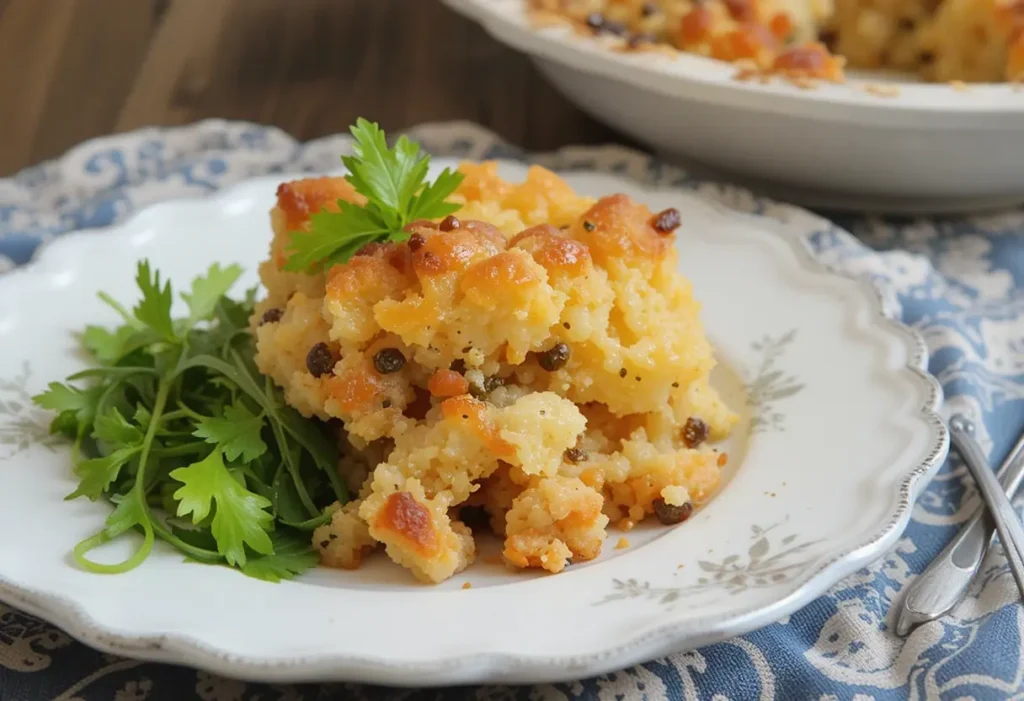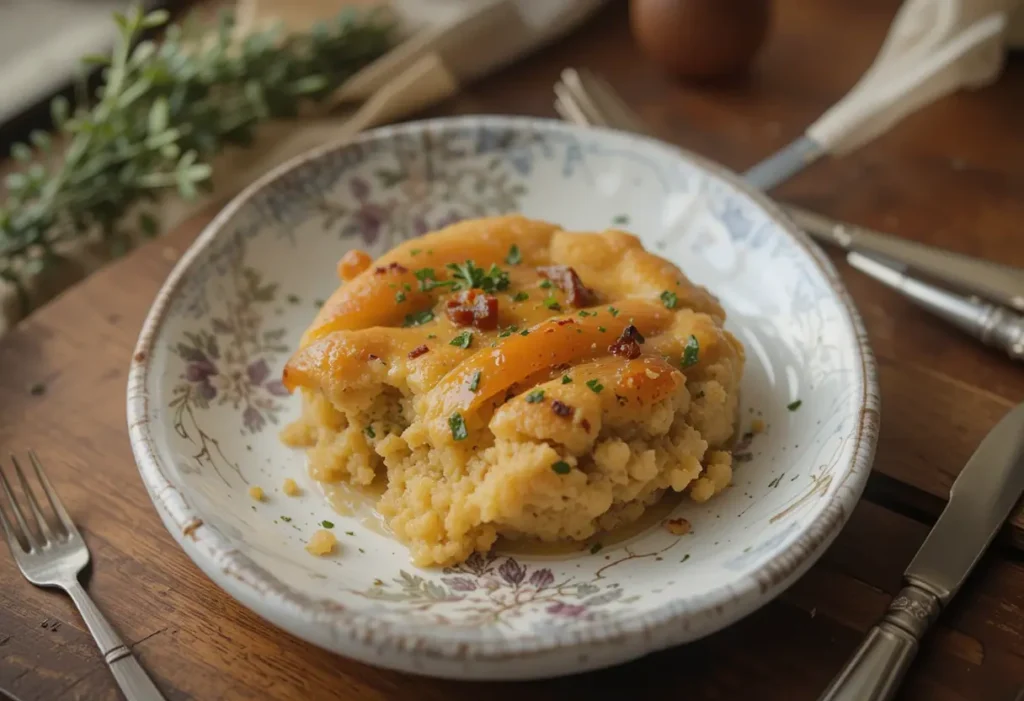Savory puddings represent an often-overlooked facet of traditional British cuisine. These dishes, a far cry from the sweet desserts typically associated with the word “pudding,” showcase savory ingredients such as meat, bread, cheese, and vegetables. Whether it’s the iconic Yorkshire pudding served alongside roast beef or a modern vegetarian bread pudding, these recipes deliver comforting flavors rooted in history.
Historically, savory puddings originated as a practical way to use simple ingredients to create filling meals. To delve deeper into the rich background of puddings and their evolution, visit the article on savory bread pudding, which provides an inspiring look into how this dish has adapted over time.
The Origins and History of Savory Puddings
Savory puddings trace their roots to medieval Britain, where they were a staple due to their affordability and ability to feed large families. Over centuries, these recipes diversified, resulting in classics such as the steak and kidney pudding and black pudding. For instance, the transformation of bread pudding from a sweet dish to a savory delight showcases its flexibility as a culinary concept.
Moreover, savory puddings gained prominence not just in Britain but also globally. Strata, for example, is a layered bread pudding variation that reflects how other cultures embraced similar concepts. Learn more about the versatility of bread in savory dishes by exploring the recipe for savory bread pudding.
Types of Savory Puddings
Traditional British Puddings
To begin with, the most iconic British savory puddings include:
- Yorkshire Pudding:
A simple batter of flour, eggs, and milk, baked to perfection, Yorkshire pudding is a must-have with roast beef. Its light, airy texture makes it a perfect pairing for rich gravies. - Steak and Kidney Pudding:
Encased in a suet pastry, this dish features slow-cooked steak and kidneys in a rich gravy, making it the epitome of hearty British comfort food.
Savory Bread Puddings
Additionally, savory bread puddings offer a delicious way to repurpose stale bread by combining it with eggs, milk, and flavorful additions. Variants include:
- Mushroom and Leek Bread Pudding
- Seafood Bread Pudding
For a deeper dive into this versatile dish, check out the savory bread pudding recipe.

Modern Innovations
In contrast to traditional recipes, modern interpretations of savory puddings often incorporate global flavors, vegan ingredients, or gluten-free substitutions. Examples include:
- Vegan mushroom bread pudding made with plant-based milk.
- Gluten-free variations using alternative flours or bread substitutes.
How to Prepare a Savory Pudding
Savory puddings are not only delicious but also straightforward to prepare. Here are two popular recipes:
Classic Steak and Kidney Pudding
- Ingredients:
- Suet pastry
- Steak and kidneys
- Onions, beef stock, and seasonings
- Steps:
- Line a pudding basin with suet pastry.
- Fill with a mixture of diced steak, kidneys, onions, and seasonings.
- Cover with a pastry lid and steam for 2–3 hours.
Savory Bread Pudding
- Ingredients:
- Cubed stale bread
- Eggs, milk, and cream
- Cheddar cheese, mushrooms, and fresh herbs
- Steps:
- Layer bread cubes in a baking dish with cheese and sautéed mushrooms.
- Pour over the custard mixture (eggs, milk, cream, and herbs).
- Bake at 375°F until golden and set.
To learn more about crafting a savory bread pudding, you can explore the detailed recipe on Toma de ReciPy.
Common Questions About Savory Puddings
- Why are some puddings savory instead of sweet?
The term “pudding” originated from boiled or steamed dishes, which could be savory or sweet depending on the filling. - What differentiates a savory pudding from a quiche?
While both use eggs as a key ingredient, savory puddings often incorporate bread or suet pastry, unlike quiches which have a traditional pie crust. - Can savory puddings be made vegan or gluten-free?
Absolutely! Ingredients such as almond milk, tofu, and gluten-free bread can substitute for traditional components.

Cultural Significance and Adaptations
Savory puddings have long held a special place in British culinary traditions. For instance, Yorkshire pudding is an iconic component of a Sunday roast, highlighting its enduring popularity. Additionally, variations like strata demonstrate how savory puddings have been embraced and adapted in other cultures.
Furthermore, these dishes are not limited to traditional recipes. Many modern adaptations reflect changing dietary needs and global influences, making them suitable for diverse palates. To discover more about strata and its role in modern cooking, visit the post on what strata means in cooking.
Conclusion
In conclusion, savory puddings are a testament to culinary ingenuity, evolving from humble origins to a celebrated aspect of global cuisine. Whether it’s the rich and traditional steak and kidney pudding or a modern vegetarian take on bread pudding, these dishes continue to delight and inspire.
If you’re looking to explore savory puddings further, start with a classic recipe or experiment with innovative twists like strata or seafood variations. For more ideas and recipes, the resources at Toma de ReciPy offer invaluable inspiration.

